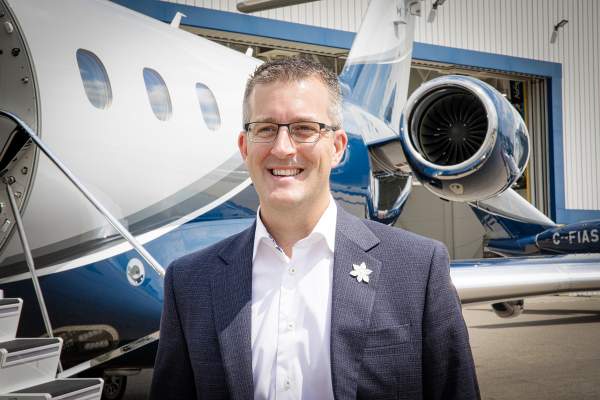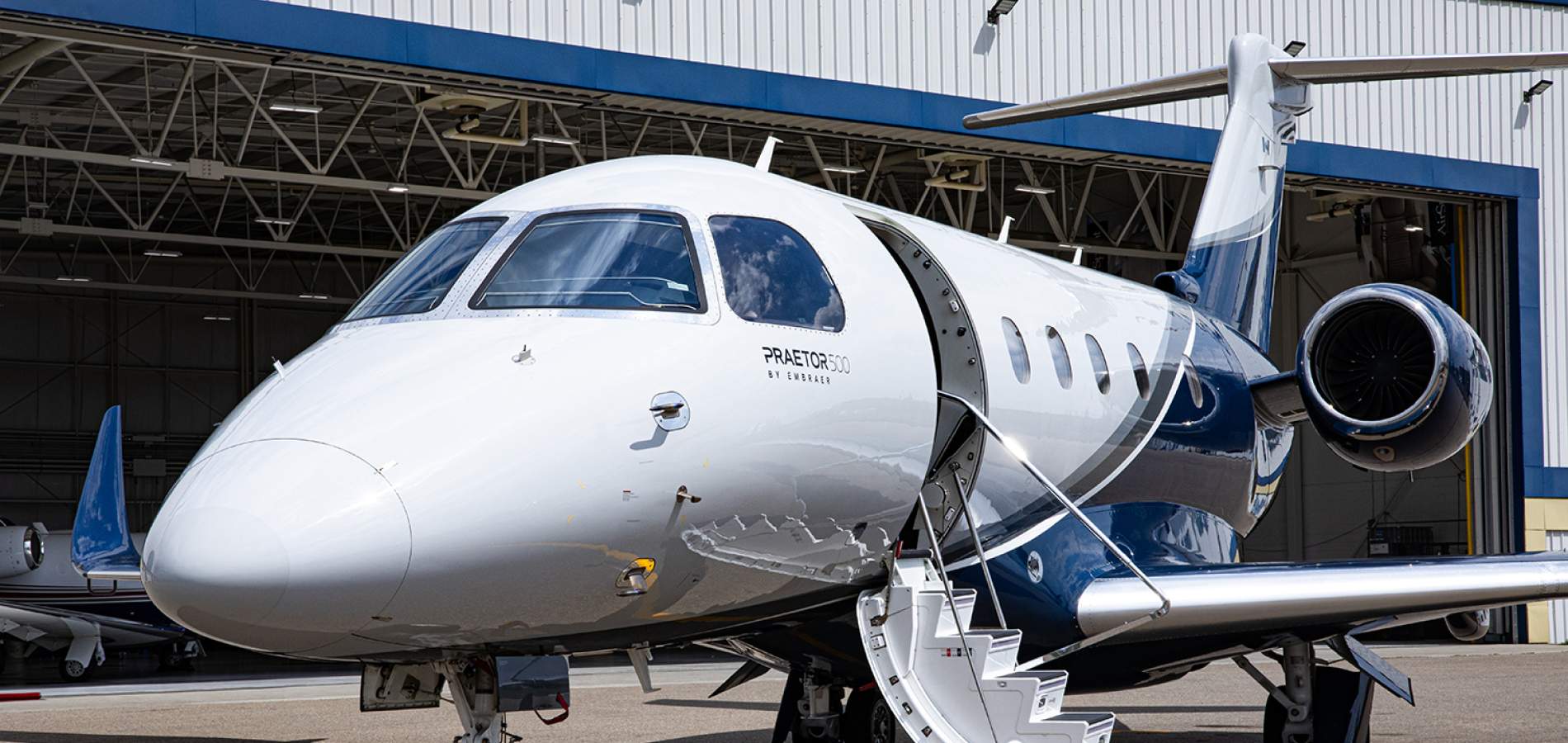THE GLOBE AND MAIL - BUSINESS TRAVEL
Travelling by private jet still isn’t cheap enough for everyone, but the fast-growing company is bringing the cost of fractional jet ownership closer to Earth.
Very few people can afford to buy a private jet. At last count, before the pandemic hit, there were just 22,000-odd private jet operators in the world—a ruthlessly exclusive club of the top 0.0003%. It’s not hard to see why: The Embraer Praetor 500, which can carry eight passengers non-stop from Calgary to Maui, starts at USD $17 million, and that’s before you tally up costs for pilots, flight attendants, fuel and landing fees.
But private air travel is luxurious. There’s no waiting in line at ticket counters, no flight cancellations and no screaming babies (unless it’s your own). That helps explain why AirSprint Inc.—which sells fractional ownership of its fleet of private jets (or PJs, in Succession parlance)—has seen its business soar. “We just came off another record year from flying,” says CEO James Elian. “Today, we’re the largest or the busiest private aviation company in the country by about double.”
To be clear, fractional ownership is still an exclusive club: AirSprint’s plans start at USD $325,000, plus operational and maintenance costs, for 25 annual hours of flying in a Cessna Citation CJ3+ six-seater. Prices go up from there, depending on your share size, the type of aircraft and the number of hours you plan to fly. A share in a Praetor 500 goes for $619,000, plus an annual overhead fee of $136,778 and $5,390 for every hour in the air. “To put it loosely, it’s a poor man’s way of getting into jet ownership—'poor’ in quotation marks,” says John Gradek, a lecturer in McGill University’s aviation management program.
But customers are jumping on board. Between 2019 and 2022, AirSprint’s annual flight hours increased from 15,402 to 30,426. The privately owned company more than doubled both its fleet, from 16 jets to 32, and its staff—it now employs 339, including more than 150 pilots.
For privacy reasons, the company won’t divulge its list of clients. In fact, even the fractional owners themselves—who buy into one specific, serial-numbered jet—remain anonymous to one another, much like in a timeshare condo (though Dragons’ Den stars Brett Wilson and Robert Herjavec have both spoken out publicly as AirSprint stans). But Scott Wenz, the company’s vice-president of sales and marketing, describes its customers as high-net-worth individuals, most of them Canadian, who rely on private jets to “see their grandkids or spend more time with their families, or go to their place for the weekend and get back to the office Monday morning,” he says. All they have to do is give AirSprint eight to 72 hours’ notice, and their PJ—fully fuelled, and staffed with pilot, crew and personal concierge—is waiting at their airport of choice.

James Elian, CEO of AirSprint since 2015. AirSprint Photo
AirSprint was launched, not surprisingly, by a couple of pilots. Judson Macor and Phil Dewsnap met in a joint law-MBA program at the University of Calgary in 2000. Their plan was to create the country’s first fractional-ownership airline, loosely modelled on industry pioneer NetJets, which was founded in 1986 and later became a subsidiary of Warren Buffett’s Berkshire Hathaway.
Macor and Dewsnap started with one plane, which mostly served Western Canada. Its first investors—frequent business travellers and flyers who’d grown tired of waiting around in crowded airports—were required to buy a minimum one-eighth interest in a Pilatus PC-12 for about $600,000, which got them 100 flying hours a year.
Less than two years in, the 9/11 tragedy unfolded. The horrors of that day—and the airport havoc that followed—turned many people on to the relative ease of private aviation. By the end of 2002, AirSprint owned a fleet valued at close to $100 million. Elian, who joined the company as a pilot just two months before the terror attacks, took over as CEO in 2015. He says AirSprint’s business approach has always reflected a pilot’s mentality: Take minimal risks and have a back-up plan (or two). “As a pilot,” he says, “you always want to have a Plan B, a Plan C, and you try to get rid of all challenges whenever possible.”
For AirSprint, this meant concentrating on growth in the West, to minimize the challenge of covering Canada’s huge geographic spread. It also required owners to pay monthly fees that covered pilots’ salaries, insurance, maintenance fees and other costs, which meant their aircraft didn’t have to be in the air for the company to pay its bills.
In the years after 9/11, AirSprint survived a few ups and downs, private aviation being an industry that ebbs and flows with the economy. The downturn in Canada’s oil patch in 2014 hit AirSprint particularly hard. The company responded by expanding its operations across the rest of the country.
But the early weeks of the pandemic were the toughest in its history, says Elian. In March 2020, when the Canadian government announced plans to close the border, messages and calls poured into AirSprint’s Calgary headquarters. Owners needed to get themselves, their families and their employees home before the country shut down. Over two weeks, the company’s fleet of then 16 planes made 500 flights. “We had our busiest month in 20 years,” says Elian. At the same time, the company was trying to shift to remote work wherever possible. “It was a huge logistic challenge,” he says.
As the world settled into lockdown, AirSprint’s fleet went into near-hibernation. Elian says he didn’t worry about the company’s ability to survive thanks to its novel fee structure. But he still sat up at night wondering how to reduce the risks associated with flying in the time of COVID-19. He studied hospitalization rates in various cities, trying to select the safest airports. He followed the evolving science of virus transmission, at first focusing on sanitizing his jets and, later, bringing in HEPA filters. “Decisions I’ve never had to make before in my career—I probably made more of those in the first three weeks of COVID than in the previous 10 years combined,” he says.
Within weeks, AirSprint’s planes were back in the air. Elian wanted to get owners flying as quickly as possible. “A significant part of the Canadian economy relies on our customers,” he says. “It’s important to keep them moving.”
Six months into the pandemic, the private aviation business started to boom worldwide, and it accelerated even faster throughout 2021 and much of 2022, according to Adam Cowburn, managing director at Alton Aviation Consultancy. New customers entered the market, driven by public health concerns, a significant reduction in commercial airline services, booming equity markets and lower interest rates. “In many major markets, activity peaked in 2022 or early 2023 at levels that were 15% to 25% higher than in 2019,” says Cowburn, though that demand has softened somewhat over the past few months. He expects the market to eventually settle around 15% higher than pre-COVID levels.
AirSprint, meanwhile, has outpaced international trends, with a three-year growth rate of 96%. The company benefits from having few domestic competitors in the fractional-ownership space, while Canada’s chief commercial airlines have reduced flights. Indeed, some of AirSprint’s fastest-growing landing slots are in cities underserved by conventional airlines—places like Grande Prairie, Lethbridge and Regina, where commercial airlines fly just once a day or less.
On top of that, takeoff times are tailored to the owner. There’s no waiting for planes to arrive or for connecting flights. (After all, the allure of private aviation has always been, as Canadian Business Aviation Association CEO Anthony Norejko put it, “Whenever you show up, you’re on time.”) PJs can also land at smaller airports than commercial airliners, meaning more locales are easily available to the private traveller. Someone flying into Toronto in a private jet can bypass Pearson International and, depending on the model, land instead at the Toronto Island Airport or an other nearby private strip.
Then there’s the luxury of it all, which AirSprint elevates with personal touches like a car-cleaning service and stocking the galley with an owner’s favourite chardonnay. When one AirSprint owner’s kids were celebrating a birthday with a trip to Disneyland, the company decked out the jet with Disney memorabilia, which it keeps stocked at its warehouse in Calgary, along with other goodies. The space also serves as a huge supply closet for tires and other oft-used parts, which were in short supply during the pandemic.
Certainly there are challenges ahead. The fractional jet market in Canada is still in its infancy and could be affected by any U.S. players that decide to move into the Canadian market, says Gradek. And the climate crisis has led to an outcry about the environmental impact of private aviation. Studies show that a person flying on a private plane emits 10 to 20 times more carbon pollution than a commercial passenger. In response, activists have called out individual private jet owners by calculating and reporting their emissions footprint.
Elian says AirSprint takes its climate responsibilities seriously. In 2021, it became the first private aviation company in Canada to fly with sustainable aviation fuel. But even Elian admits the fuel is difficult to access and unlikely to be regularly available in Canada before 2030.
In the meantime, the company buys carbon offsets on behalf of its fractional owners and has achieved an offset rate of 93%; its plan is to hit 100% by 2025. “It’s something I’m excited about,” says Elian. “We’re actually going to create change for the remaining private aviation industry in Canada.”
-----------------------------------------------
Source: Posted by the Globe and Mail, Report on Business, September 29, 2023.
